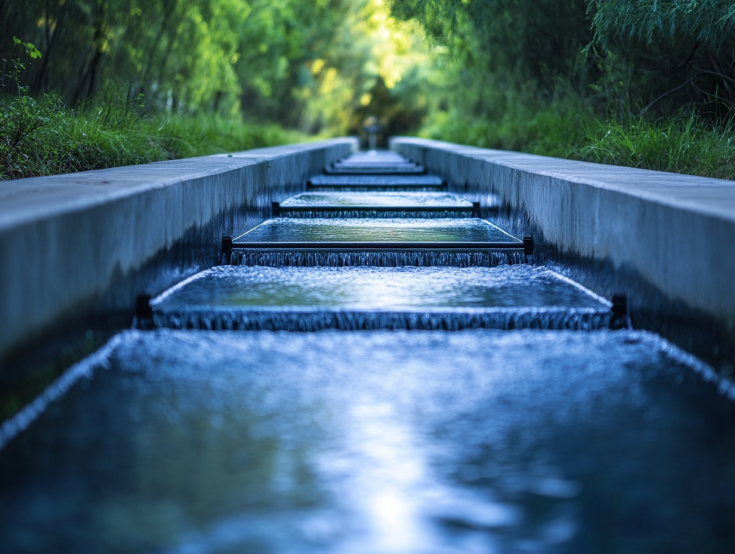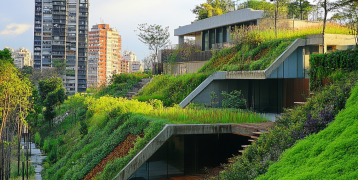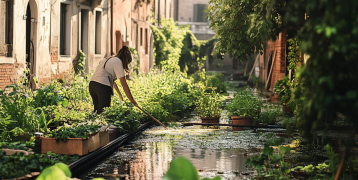Blue-green infrastructure for resilient cities I: Sustainable water management: key learnings

On 17 October 2024, the Policy Learning Platform hosted the first episode of the webinar series 'Blue-green infrastructure for resilient cities'. This session focused on implementing blue infrastructure solutions for sustainable water management.
This webinar inspired local and regional policy makers with practical examples of blue infrastructure. This episode explored inspiring solutions, good practices, guidance and recommendations backed by real-life examples from European cities and regions from many Interreg Europe projects.
Watch the recording, download the presentations and dive into the key learnings below.
Webinar recording
Webinar agenda
The webinar has been designed and moderated by Magda Michaliková and Astrid Severin , Thematic Experts for a Greener Europe.
00:01:00 Introduction by Astrid Severin and Magda Michaliková
00:13:32 Keynote speech by Rene Reisner, Ministry of Climate, Estonia, on Achieving climate resilience through sustainable water management: the case of Estonia
00:27:06 Q&A: How are you Slowing down the rivers? Any specific approach?
00:30:22 Q&A: How do you cope with private land and water management? e.g. Flood prevention might not be possible since there is no public land available.
00:33:41 Q&A:Do you have Funding Programmes for private People for Flood prevention?
00:35:15 Presentation by Agnieszka Nędza, Aquares sp. (Poland) on Urban distributed controlled micro retention system (NBS4LOCAL)
00:41:45 Q&A: How many installations do you have already? And are you planning to have other public buildings equiped?
00:44:23 Presentation by Wojciech Sołtysiak, The Complex of Świętokrzyskie and Nadnidziański Landscape Parks, on Renaturalisation of the inland delta of Nida River (NACAO)
00:55:22 Q&A: What is the economic impact from your point of view?
00:57:43 Q&A: What did the local stakeholders think of the project? Were they for the project or against it and has this changed over time?
00:59:52 Q&A: Who were the owners of the land which is part of the flood area now and how were they compensated (if at all)?
01:00:06 Q&A: Did you study or consider any economic or financial data, to explaine the decisions in relation to economic needs of agriculture and forestry?
01:01:41 Q&A: About freshwater mussels in the natural self-purification process, and how replicable this method could be for other European river systems?
01:02:56 Q&A: Does the Nida crosses municipalities? How the urban sections align with the restoration project? Many thanks for this nice project & presentation!
01:05:08 Presentation by Jasper Dugardeyn, Province of West Flanders, Belgium on Public-private collaboration to buffer water against flooding and drought (Gov4Water)
01:17:40 Q&A: How many farmers have been participating in this program?
01:19:45 Q&A: How does the design flexibility of these small-scale water storage areas allow them to balance flood prevention with the increasing need for water retention during droughts?
01:21:31 Q&A: What lessons have you learned from working with farmers in West-Flanders that might be applicable to other regions with different water usage and agricultural practices? Their willingness to cooperate, reasonability?
01:23:10 Panel discussion
Key learnings
- Blue infrastructure provides a cooling effect and mitigates the urban heat island.
- Implementing nature-based solutions helps prevent and reduce the severity of both flooding and water scarcity.
- Restoration of rivers significantly increases water retention capacity in the area and improves local biodiversity.
- It is important to restore wetlands, peatlands and floodplains to absorb excess rainwater. Agroforestry and buffer zones will help to reduce soil erosion.
- Highly sealed urban areas will benefit from solutions incorporating vertical and underwater reservoirs for rainwater collection.
- Promoting adaptive water management policies and enhancing cross-sectoral collaboration and governance is key for a sustainable water management.
- It is essential to involve citizens and stakeholders such as farmers and landowners in water management, so is raising public awareness and building community resilience.
- Many good practices and knowledge about the required changes already exist and a speedier implementation of BGI measures can be achieved through better communication and sharing of experiences
Presentations
Download the presentations below.

